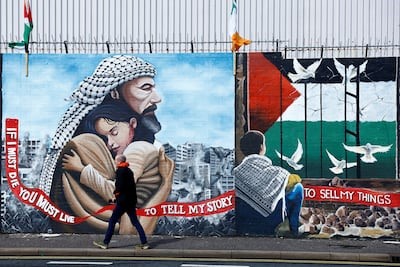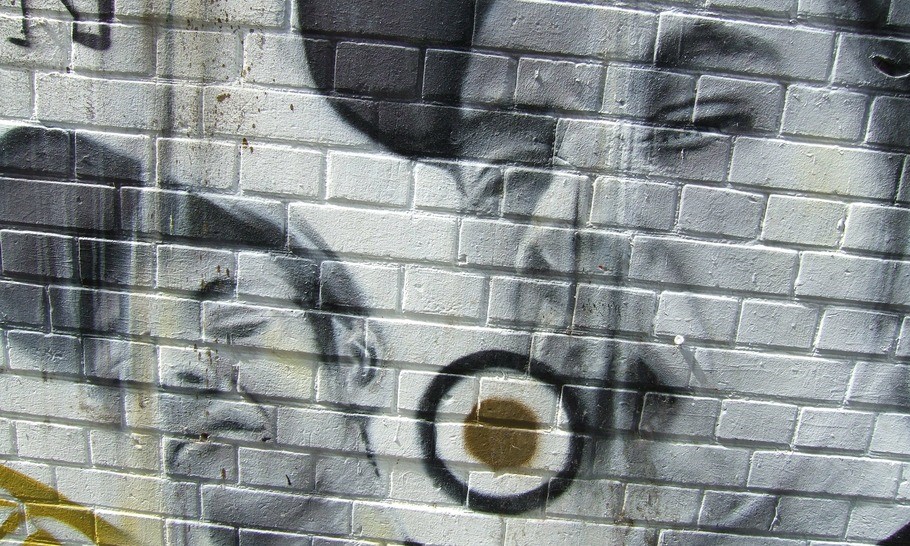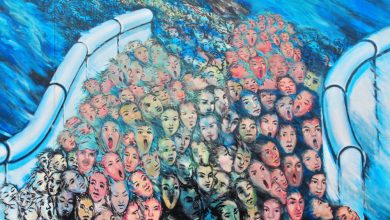Graffiti and the Identity Construction of Youth-2

Graffiti has been accepted as an illegal activity and some adolescents rebel against the system of their society. When these two situations come together, they believe they create an identity by being rebellious and express themselves with an illegal and creative activity, graffiti. Like West (2007) argues: ‘’I can surely say that ‘beating the system’ and breaking some of the rules were definite factors in the motivation of writers.’’ (as cited in Carrington, 2009, p. 417). Truly, most writers highlight in their pieces or in their interviews that they do because they don’t accept the order and choose graffiti because of its illegality. It’s known that as graffiti is not allowed, the freedom of speech is restricted likewise. So, enthusiastic young people manifest their opposite thoughts with crying out on walls and streets. In here, Banksy can be seen as an example of criticizing, appealing and standing against the situations, states, the changing values, the bad conditions of refugees and many others with consulting to graffiti. He paints where he lives or where he goes and protests what he sees as wrong, and this protesting style becomes more effective just because it occurs in an illicit way. Banksy started to do street art in his very early ages and now he has a reputation and an interesting identity. This situation supports the idea that most of the writers begin to participate in graffiti culture in their adolescence times, plus, in this era, adolescents tend to be rebellious and looking for an identity and graffiti has the reputation of being rebellious and anti-system; in this way they steer for graffiti (Valdez, 2007, p.23). Many of them try to gain a name, mostly a nickname and write those names under their drawings. This attitude provides them a status among other writers and they construct an identity.

Another motivation that young writers do graffiti is that they intend to obtain a gender identity for the reason that they accept graffiti as a male activity and with doing this, they think they strengthen and prove themselves. It’s considerable that both males and females do for a masculine identity. For males, Macdonald (2001) enounces that: ‘’…male graffiti writers ‘do’ because ‘doing’ allows them to construct and confirm their masculine identities.’’ (p.96), simply because graffiti needs bravery, risks and challenges, which generally a man is supposed to can handle. A graffiti writer should carry heavy paints, write quickly and when encounters with a policeman threat, must also run away quickly. All these features are accepted nearly everywhere as masculine abilities. Hence, people receive that graffiti has a masculine nature. Accordingly, the male writers feel satisfied to display their strength, the capacity to overcome these difficulties, tough temperament, rebelliousness and so on. They have a chance to prove their manhood and create a masculine identity. On the other hand, it can be said that females may have exactly the same attitude. ‘’What the female writer demonstrates through graffiti is her ability to be ‘masculine’ ‘’ (Macdonald, 2001, p.141). Being a girl is equal to weakness in many societies. Young girls who demand to see and prove how far they can push themselves, thus, begin to go out and do graffiti with breasting all its difficulties. Actually, these female writers reject all the stereotypes with being a writer. However, they also face with other stereotypes for how and why they do graffiti as a girl, like male writers ask whether a female writer does because she is a girlfriend of a writer boy with also kidding for helping the carrying paints. Therefore, young girls resist for gaining a masculine character and continuing to ply their artistic writings or drawings.

As a result, youngsters use graffiti in the process of creating an identity in three aspects: First they search for an identity and try to comprehend the environment around them, therefore some maladaptive behaviors can occur and they use graffiti rather than other habits to calm themselves and shape their behaviors, then identities; secondly people in their youthfulness stand against the systems and graffiti is an illegal activity, so they gain a rebellious identity with doing graffiti; thirdly graffiti is seen as a masculine business, thereof, both boys and girls turn to graffiti to create a gender identity, a masculine identity.

References:
Andrews, F. (2023). Banksy in Palestine: A look at the street artist’s work in Gaza and the West Bank. The National. https://www.thenationalnews.com/arts-culture/art-design/2023/06/23/banksy-in-palestine-a-look-at-the-street-artists-work-in-gaza-and-the-west-bank/
Carrington, V. (2009). I write, therefore I am: texts in the city. Visual Communication, 8(4), 409–
425. https://doi.org/10.1177/1470357209343356
Jalal, M. (2024). Eleven murals for Gaza painted across the world in solidarity and protest. The National. https://www.thenationalnews.com/arts-culture/art-design/2024/05/02/gaza-murals/
Johnson, T. (2019, February 2). The Gillette ad and the crisis of masculinity. The Article. https://www.thearticle.com/the-gillette-ad-and-the-crisis-of-masculinity
Macdonald, N. (2001). The Graffiti Subculture: Youth, Masculinity and Identity in London and
New York. London: Palgrave Macmillan
Valdez, L.M.A. (2007). Graffiti art and self-identity: Leaving their mark. Theses Digitization
Project. 3079.https://scholarworks.lib.csusb.edu/etd-project/3079





